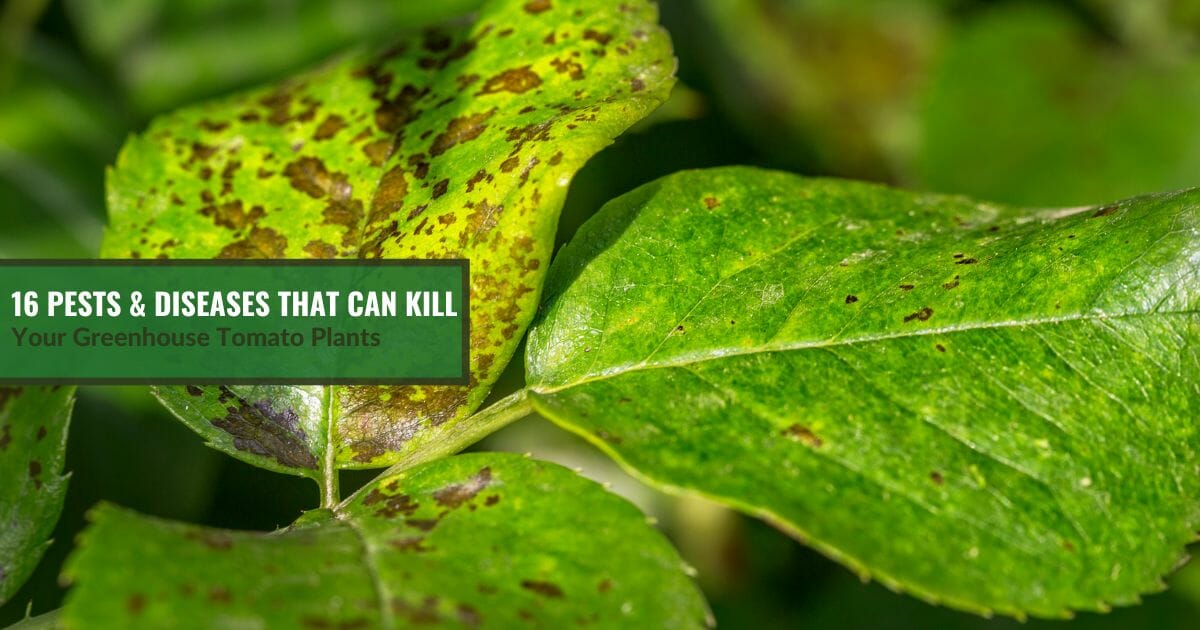
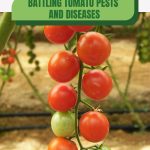

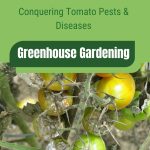
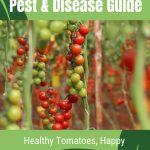




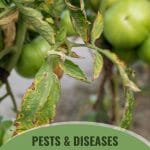
Tomato plants are one of the top plants that greenhouse growers choose to grow inside of a greenhouse. The warm and protected climate makes for a perfect tomato-growing environment. Unfortunately, tomato plants aren’t the only thing that thrive in a greenhouse. Tomato pests and diseases can get inside and threaten the health of your tomato crop.
For the most part, greenhouse tomato plants are protected from inclement weather and large pests. Smaller pests and diseases, however, can get inside and infest your tomato plants. Fortunately, monitoring your plants for signs of pests and diseases will help you manage the problem before it’s too late.
If you want to grow healthy tomato plants in your greenhouse, it’s important to be able to identify when there’s a problem. In this article, we’ll describe the most common pests and diseases to afflict greenhouse tomato plants, and what causes them. Additionally, we’ll provide you with strategies to prevent these pests and diseases from killing your greenhouse tomato plants.
Quick overview of common tomato pests and diseases
| Where? | Signs/Symptoms | Pest/Disease |
| Leaves | Tiny white or green flies clustered under or around new leaves; deformed or yellowing leaves; sticky substance (honeydew) | Whiteflies |
| Leaves | Wilting plant; dead, brown tissue and yellowing leaves moving upwards from older leaves to newer leaves | Verticillium wilt |
| Leaves | Brown spots on foliage, moving upwards from older leaves to newer leaves. | Septoria leaf spot |
| Leaves | Pale, yellow spots forming on the leaves with undefined margins; greenish-brown mold on undersides of the leaves | Leaf mold |
| Leaves | Brown spots on the leaves covered in gray mold, starts with small, brown spots | Gray leaf spot |
| Leaves | Black lesions, beginning closer to the leaf’s margins until the leaf eventually dies off | Bacterial speck |
| Leaves | Large green caterpillars with white diagonal strips and some black spots | Tomato hornworm |
| Leaves (underside) & stalk | Small, soft-bodied insects; yellowing leaves and stunted plant growth | Aphids |
| Leaves & stalk | Yellowing or browning leaves; smeared tissue on the stalk | Fusarium wilt |
| Leaves & fruits | Green, yellow, and white spots in a similar mosaic pattern; fruit may turn brown on the inside | Tomato mosaic virus (ToMV) |
| Leaves & flowers | Greenish-yellow mottling of leaves; stunted growth; reduced flower production; deformed or curled leaves and flowers | Tobacco mosaic virus (TMV) |
| Leaves, stalk & fruits | Blotchy spots primarily on the fruit; leaves and stems can wilt and die off; you’ll likely find thirps | Tomato spotted wilt virus |
| Leaves, stalk & fruits | Blotchy spots primarily on the fruit; leaves and stems can wilt and die off | Tomato apex necrosis virus (ToANV) |
| Fruits | Dark, wet spots on bottom of fruit | Blossom end rot |
| Roots & plant | Bulb-like growths on roots; Stunting, discoloration, or wilting of plant | Root knot nematodes |
| Roots & stems | Rotten roots; stem’s interior turns reddish brown | Fusarium crown and root rot |
| Seedlings | Sudden wilting and rot at the soil line | Damping off |
Common greenhouse tomato pests
While garden pests such as spider mites, cutworms, and flea beetles are often found on outdoor tomato plants, smaller pests are more likely to infest your greenhouse tomato plants. Not only can they get through mesh screens more easily, but they can be brought in undetected on other plants or in soil.
Unfortunately, their size also makes these pests harder to spot. If left untreated, a severe infestation of even the tiniest pest can mean death for your tomato plants.
Aphids
You may find bunches of tiny aphids anywhere along the stems or leaves of your greenhouse tomato plants. Aphids won’t do significant damage in small numbers. However, in large numbers they can significantly reduce the health of your plants and introduce other pests and diseases.
Make sure to keep an eye out for these small, soft-bodied insects by regularly checking under the leaves of your tomato plants. Also check your plants for signs of aphid damage, including yellowing leaves and stunted plant growth.
Prune damaged leaves and manually remove aphids by shaking the plant vigorously. If aphids persist, apply an organic insecticidal soap or neem oil. You can also introduce beneficial insects such as ladybugs into your greenhouse.
Whiteflies
Whiteflies are a type of sap-sucking insect closely related to mealybugs and aphids that cause damage by sucking plant juices and nutrients from leaves. These tiny white or green flies prefer new plant growth, so you’re most likely to find them clustered under and around new leaves on your tomato plants.
Symptoms of a whitefly infestation include deformed growth or yellowing leaves. Additionally, sticky leaves indicate the presence of honeydew excreted by the whiteflies. While honeydew alone isn’t harmful, it can lead to fungal diseases such as sooty mold which can kill your tomato plants.
As with aphids, it’s easiest to manage whiteflies if you spot them early on. Shake your tomato plant vigorously or spray it with a jet of water to dislodge whiteflies, then treat it with a neem oil spray to prevent further infestation.

Root knot nematodes
A number of predatory nematodes are beneficial for greenhouse gardening since they prey upon common garden pests. Root knot nematodes, however, can attack your tomato plants by feeding on roots with their needle-like mouthparts.
These microscopic roundworms are difficult to identify since they’re not only invisible to the naked eye, but also live beneath the soil. The only way to confirm the presence of root knot nematodes is to inspect the roots of your plant for galls, bulb-like growths that appear on the root as it attempts to heal itself.
Some above-ground symptoms of an infestation include stunting, discoloration, or wilting. If you suspect root knot nematodes are affecting your tomato plants, you can check with your local extension office about getting a sample taken.
One of the risks that can come with a root knot nematode infestation is that the root lesions leave your tomato plants susceptible to viruses, bacteria, and fungal diseases. Without healthy roots, your tomato plant won’t be able to absorb water effectively, and the entire plant could die back if left untreated.
While you can treat the soil with neem oil, this is not guaranteed to be an effective nematicide. Instead, do your best to prevent root knot nematodes by practicing crop rotation, choosing resistant varieties of plants, and planting marigolds.
Tomato hornworm
Tomato hornworms are the large caterpillars of the five-spotted hawk moth. Luckily, tomato plants grown in a greenhouse are less likely to be infested with the tomato hornworm, as the adult moths are less likely to get inside. Still, even just one tomato hornworm can destroy the leaves and fruit of a tomato plant, so it’s important to be aware of them.
While inspecting your tomato plants, keep an eye out for these large, green caterpillars. Unfortunately, they tend to camouflage with the stem and foliage of the tomato plant, so be vigilant.
If you find any, you can drop them in a bucket of soapy water to kill them.
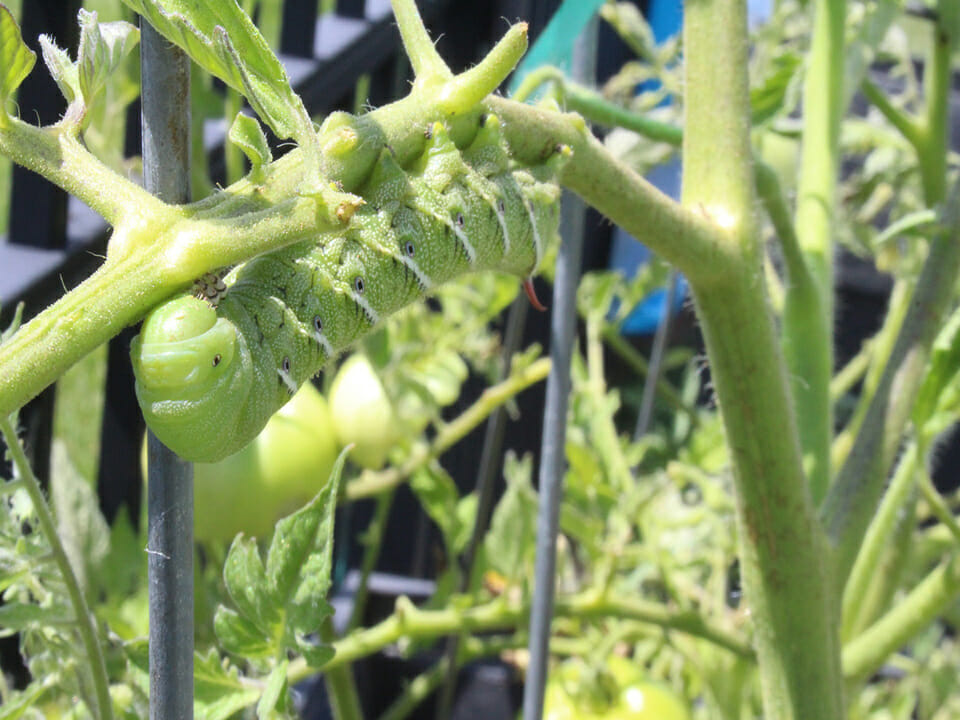
Common greenhouse tomato diseases
Growing tomato plants in a greenhouse unfortunately does not mean your plants will be completely disease-free. In fact, greenhouses are ideal environments for numerous diseases to flourish, since they tend to have higher humidity levels and warmer temperatures.
There are several types of diseases that can harm or even kill your greenhouse tomato plants: diseases caused by viral pathogens, fungal pathogens, environmental factors, and bacteria.
Tomato diseases caused by viral pathogens
Viruses are frustrating for tomato growers since they can’t easily be cured or treated. Often, a viral disease will simply run its course until the tomato plant dies. Therefore, preventing viral spread is key to growing healthy tomatoes.
Mosaic viruses
Two mosaic viruses commonly attack greenhouse tomatoes: the tobacco mosaic virus (TMV) and the tomato mosaic virus (ToMV). Both have very similar symptoms.
The telltale sign of the tobacco mosaic virus is the greenish-yellow mottling of the leaves, but you’ll also find stunted growth and reduced flower production, and the foliage and flowers may become deformed or curled. This nasty virus has a long dormant period and can withstand warmer temperatures than most other plant viruses.
The tomato mosaic virus will appear as green, yellow, and white spots in a similar mosaic pattern. Your tomato fruit may even turn brown on the inside. Both of these particular viruses are primarily spread mechanically through contact.
Tomato spotted wilt virus
Tomato spotted wilt virus appears as blotchy spots primarily on the fruit. In addition, leaves and stems can wilt and die off. This particular virus spreads through thrips.
Thrips feed on an infected plant and then carry it to new hosts. Symptoms can appear as early as five days. Thrips also spread very quickly as they have wings, so they can easily transfer this virus to several nearby plants if you aren’t careful.
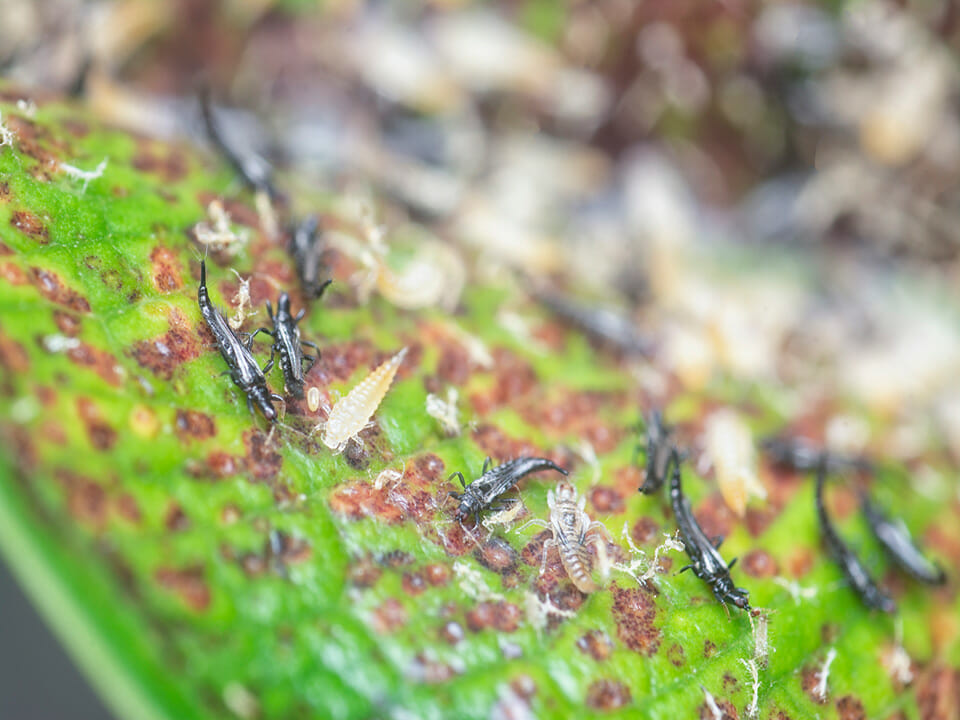
Tomato apex necrosis virus (ToANV)
The symptoms for the tomato apex necrosis virus (ToANV) are very similar to the tomato spotted wilt virus, so much so that only laboratory testing can confirm its presence. Necrosis refers to dead plant tissue, as this virus will swiftly kill portions of your tomato plant.
ToANV affects the leaf, stem, and apex of a tomato plant, and can leave rings of necrosis on the fruit. While this virus spreads mechanically, there have been some studies that suggest whiteflies can carry this virus.
Damping off
Damping off is caused by various plant viruses, including the ones listed above. This disease particularly attacks young, fragile seedlings. Infected plants will suddenly wilt and rot at the soil line.
Unfortunately, if you spot damping off in seedlings, it’s already too late. To prevent damping off, make sure to use new potting soil as well as clean your seedling trays and potting tools. Avoid overwatering seedlings, as cool, wet soil is the main reason for damping off.
Diseases caused by fungal pathogens
Several fungal diseases can kill your greenhouse tomato plants. If you can spot them quickly, however, you can prevent the disease from spreading and save your plant.
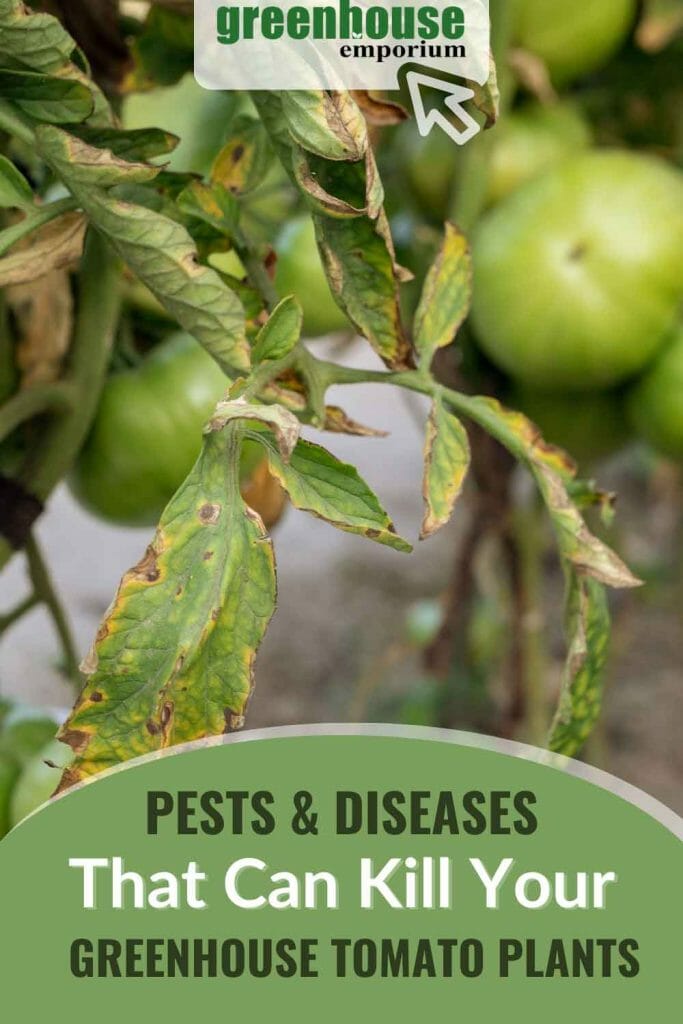
Verticillium wilt
Verticillium wilt is a soil-borne fungus that can’t be treated with common fungicides. It can lay dormant in the soil for up to a decade, waiting for a suitable host. Then it invades the tomato plant through the roots, particularly through lesions. The fungus will ultimately prevent your tomato plant from taking in the water and nutrients it needs to survive.
As the name suggests, symptoms include wilting, which can easily be mistaken for improper watering or even root rot. Over time, your tomato plant will develop dead, brown tissue and yellowing leaves beginning from the older bottom leaves and spreading upwards.
If you prune a piece of the stem and then slice it lengthwise with a sharp knife, the interior of an infected stem will be brown. While you can’t cure verticillium wilt, you can slow its spread by pruning infected plant parts.
Fusarium crown and root rot
Fusarium crown and root rot has similar symptoms to verticillium wilt. In fact, symptoms are so similar that only lab testing will confirm which fungal infection your plant has. It thrives in cooler temperatures, low soil pH, and poor drainage.
The roots of an infected plant rot and the stem’s interior turns reddish brown. Like verticillium wilt, fungicides won’t be effective for this particular disease. It’s best to discard the plant completely, including the roots. Remove and sanitize any gardening tools in contact with the affected plant to avoid further spread.
Fusarium wilt
Fusarium wilt is caused by a soil-borne fungus targeting tomatoes, potatoes, peppers, and eggplants. Early indications include yellowing leaves or brown, smeared tissue on the stalk. If allowed to progress, it can cause significant damage.
Cool and soggy conditions can allow this disease to establish, so maintain proper greenhouse temperatures and resist overwatering. Crop rotation can help prevent this disease by interrupting the fungus’ life cycle.
Septoria leaf spot
Another common (and incredibly annoying) fungal disease that can affect your tomato plants is Septoria leaf spot, caused by the fungus Septoria lycopersici. This disease appears as brown spots on foliage, moving upwards from older leaves to newer leaves.
If you spot this disease early on, you can prevent the spread by pruning diseased leaves.

Leaf mold
Leaf mold is one of the most common problems to affect greenhouse tomato plants. It’s caused by Passalora fulva fungus that specifically attacks tomato plants.
Leaf mold can spread through direct contact, but spores can also become airborne. This type of fungus can survive on stakes and walls, and can even survive within tomato seeds.
Symptoms of leaf mold include pale, yellow spots forming on the leaves with undefined margins. In addition, a greenish-brown mold will form on the undersides of the leaves. This fungus will also affect the fruit, developing black patches that become leathery.
Prune affected portions of the plant and treat the rest with an organic copper fungicide to prevent further spread.
Gray leaf spot
Stemphylium gray leaf spot is another common fungal disease that can affect your tomato plants. While cherry tomatoes and grape tomatoes are especially prone to this particular fungal disease, greenhouse plants are particularly desirable environments for this fungus to thrive.
Gray leaf spot usually begins as small, brown spots on the leaves, eventually expanding in size and becoming covered in a gray mold. This fungus isn’t typically found on the fruit itself. However, with continued leaf necrosis, your tomato fruit will be more prone to sun scalding.
You can treat your plant with organic fungicides like neem oil, but first prevent the spores from spreading by pruning affected leaves.
Additional diseases
In addition to diseases caused by viral and fungal pathogens, your greenhouse tomato plants can be affected by environmental or even bacterial diseases.
Blossom end rot
Blossom end rot is a disease caused by environmental factors, including insufficient calcium in the soil, drought stress, extreme temperature variability, or root damage. It appears as dark, wet spots on the bottom of the fruit, making it inedible.
To prevent irregular or extreme conditions, irrigate regularly and maintain steady daytime/nighttime temperatures in your greenhouse.
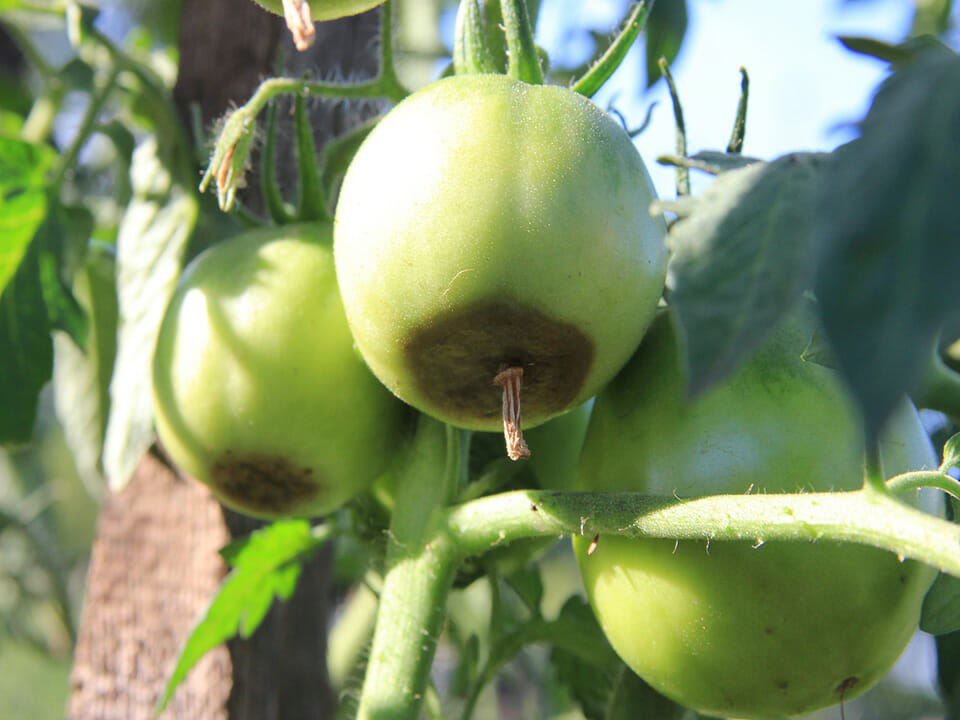
Bacterial speck
Bacterial speck appears as black lesions, beginning closer to the leaf’s margins until the leaf eventually dies off. These black lesions can also appear on the stems and fruit. Lesions on fruit, however, tend to be more superficial.
Infections can spread via soil, contact, dead plant debris, or infected seeds. Bacterial speck thrives in moist environments, so good airflow is key for prevention.
Copper spray is the best treatment method for this particular disease, and pruning the affected tissue will prevent it from spreading further.
How to prevent tomato plant diseases in your greenhouse
If allowed to spread, a single disease can kill your greenhouse tomato plants or significantly reduce fruit production. The most important step in keeping your plants healthy is regularly inspecting them for signs of stress or disease and addressing any issues promptly.
Even if your plants display no visible symptoms, it’s important to prevent the spread of disease with good greenhouse practices:
- Make sure your greenhouse has proper air circulation and ventilation to reduce excessive humidity.
- Leave adequate space between individual plants to improve airflow.
- Use new potting soil that is well-draining and rich in organic matter.
- Install drip irrigation to avoid getting the foliage of tomato plants wet.
- Regularly sterilize your greenhouse tools and supplies.
- Prevent the spread of pests to reduce tissue and root damage to the plants.
- Maintain steady daytime/nightime temperatures in the greenhouse.
- Treat your plants with organic fungicides preventatively to reduce asymptomatic transmission of disease.
- Quarantine new plants coming into the greenhouse for at least 2 weeks to monitor for signs of disease.
Finally, plants under stress are more susceptible, so you can prevent diseases from killing your greenhouse tomato plants by maintaining ideal growing conditions. In addition, avoid causing superficial damage to the plants both beneath and above the soil, as lesions can invite disease.

